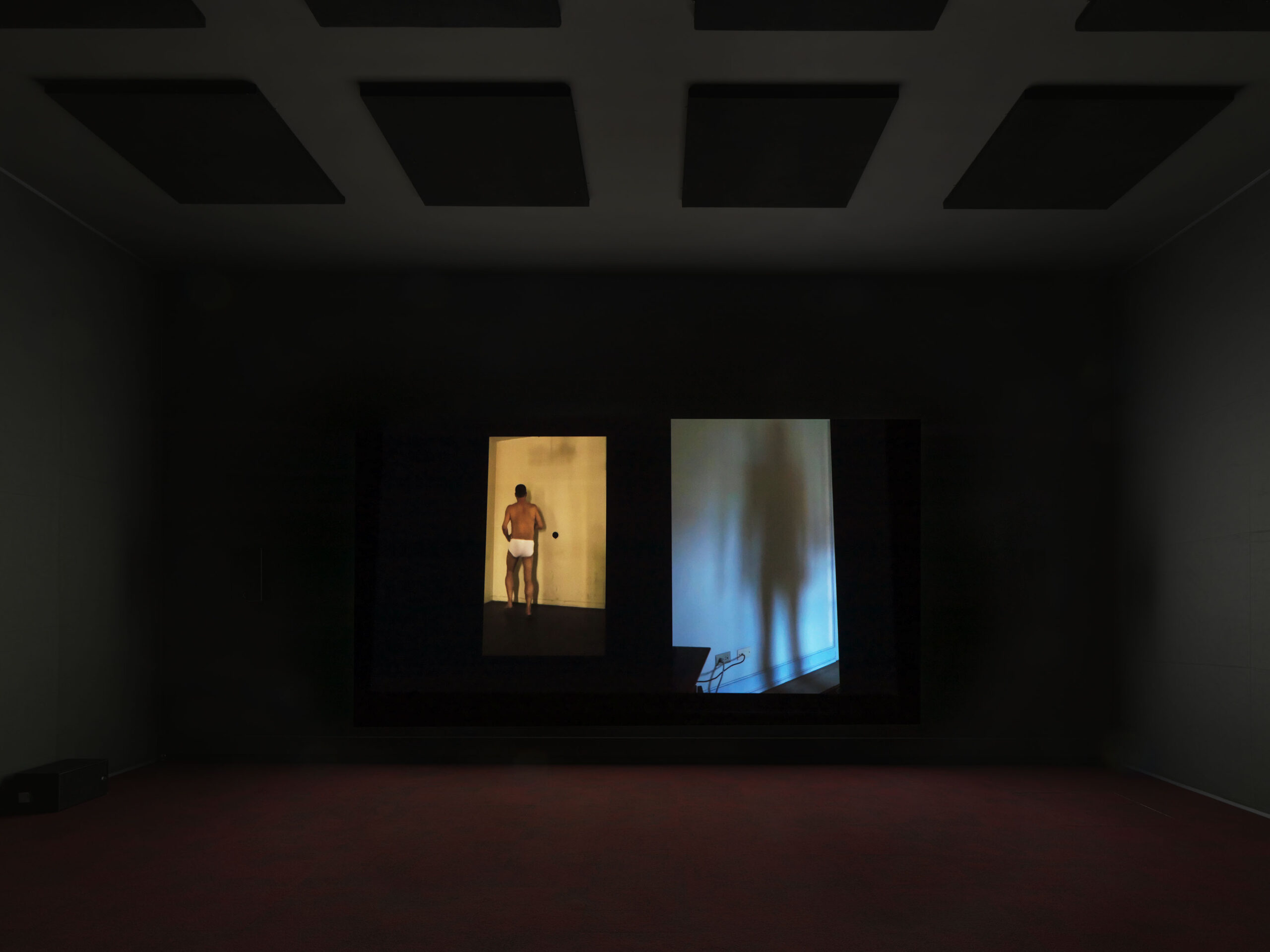Rumour has it: Wolfgang Tillmans’ collection is so galvanising that the entire Pompidou needs a post-exhibition 5-year hiatus

Wolfgang Tillmans in the Bpi, 2025; image by Jens Ziehe, courtesy of Centre Pompidou
Everytime I find myself in Paris I get exhilarated – for all the very obvious reasons, of course, but specifically as I get to see what the Centre Pompidou (the best museum in Europe, to my personal taste) devises each time around. Funnily enough, every visit is accompanied by faint whispers of the 70s intelligentsia who, at the opening of its doors, disparagingly appointed the museum a “black monolith,” a “mad convection current” (who else than Baudrillard?), or, my personal favourite, the “Palm Beach of the poor” (as per Lefebvre). Last week however, I brushed these demons off in ease, knowing none of the early-day detractors was ever a 20-something-year-old girl seeing Wolfgang Tillmans on display in a 6000m² showroom in 2025…
Since around two weeks ago, Tillmans’ famous multimedia appendages monopolised what just a few months prior was the biggest public library in Paris. And as if that was not a grand enough homage toward the German virtuoso, the honorary quality of his exhibition lies in it being Pompidou’s closing act, before the museum winds-up its public admission for what’s forecast to be the next full five years (even the nicest museums need a little asbestos detox every few decades…). Given the converging circumstances, what was notably my hundredth visit climaxed into an even more notable farewell feast.

Wolfgang Tillmans – Moon in Earthlight, 2015; Courtesy Galerie Buchholz, Galerie Chantal Crousel, Paris, Maureen Paley, London, David Zwirner, New York
Nothing could have prepared us – Everything could have prepared us has zero devotion to structure (or space, in its conservative definition). The territory of the ex-library was spurred into a playful compound of Tillman’s decontextualised, de-chronologised work: tentative photo-explorations from when he was an exchange student in England, stowed right next to campaigns for i-D and Interview magazine, revered worldwide by the fashion heads irrespective of decade; effigies of our deified Patti Smith, Chloë Sevigny and Aphex Twin, acted out like cameos in a jammed orchestra, where everyone from unknowns to cultural icons share roles of equal screen time. In the middle of the expanse, in glass cupboards perhaps used to protect the library’s more feeble memorabilia, resides now a dutiful curation of Tillman’s own collections. Worthy of note: Dennis Cooper’s seminal “The Sluts”, The Magnetic Fields’ astonishing 69 Love Songs CD, a John Waters (original?) Polyester poster, tucked to the back, a pristine copy of Barbara Kruger’s “Remote Control”, a clearly not-pristine, rare copy of Edmund White’s “Staaten der Sehnsucht: Reisen durch Gay America”. Of course, this is a highly non-exhaustive list of the cultural artefacts – it’s a brief inventory that spoke volumes to someone who dedicated an enormous chunk of their life in a process of self-curation, and for whom the objects themselves, not only the glass doors, acted as a reflective surface. It’s probably not only me basking in this sentiment, but at least two thirds of the internet-raised visitors alike.

Wolfgang Tillmans in the Bpi, 2025; image by Jens Ziehe, courtesy of Centre Pompidou

Wolfgang Tillmans in the Bpi, 2025; image by Jens Ziehe, courtesy of Centre Pompidou
The most striking detail in the lack of chronology or division per style is the feeling of succumbing directly into Tillman’s disparate cognitive processes. The artist jaunts from mystical nature photography into Juergen Teller-esque portraiture, into a thoroughgoing book cover art showcase, and right back into effusive close-ups redeeming a certain spirituality in his oeuvre; all in similar motion to neurons firing, or pardon my French, sperm roaming towards germination (I did not just concoct this association, it’s in recollection of his Freeswimmer cartographic print series that took over an entire mini-room of the Bibliothèque Publique d’Information’s second floor.)

Wolfgang Tillmans in the Bpi, 2025; image by Jens Ziehe, courtesy of Centre Pompidou
At the end of the day, Wolfgang Tillmans is almost a synonym for photography (I bet even hearing his name in the beginning conjured that Young Mungo cover in your mind). After all, he is the only capital-P photographer to ever win a Turner prize. Therefore, some of the visitors and his earnest fans may have seen his archival collection of films for the first time, as the exhibition called dibs on one of his lesser known dexterities. The library computers were left untarnished in their initial positions, where half of them are displaying vignettes of the previous librarians Tillmans filmed himself, while others are concerned directly with the complete Tillmans video library – a compendium of highly-specific moving imagery, for which atmospheric, sonorous and hypnotic would be appropriate descriptors. (Possibly my favourite part of the whole three rounds I took around the space).
Anyway… just a little non-ultimatum reminder: You have a few more months to delve into all of his work, or frankly any of the other exhibitions currently on display at the Pompidou. We’re sad to see one of the greatest cultural centers cave in for half a decade – but at least it’s saying its proper goodbyes with a bang.

Wolfgang Tillmans in the Bpi, 2025; image by Jens Ziehe, courtesy of Centre Pompidou

Wolfgang Tillmans in the Bpi, 2025; image by Jens Ziehe, courtesy of Centre Pompidou
Wolfgang Tillmans: Nothing could have prepared us – Everything could have prepared us
13th June – 22nd September 2025
Centre Pompidou, Paris
Get your tickets here
Images by Jens Ziehe
Courtesy of Centre Pompidou
Words by Luna Sferdianu
Notifications